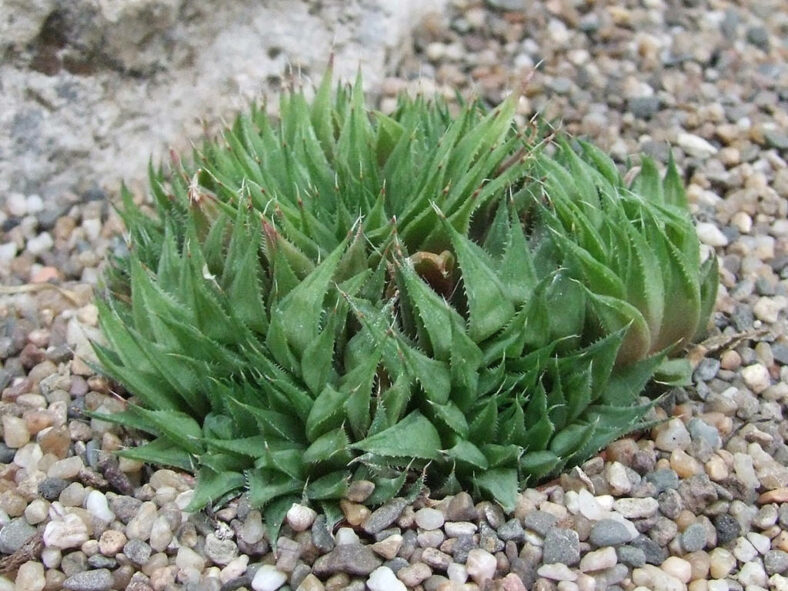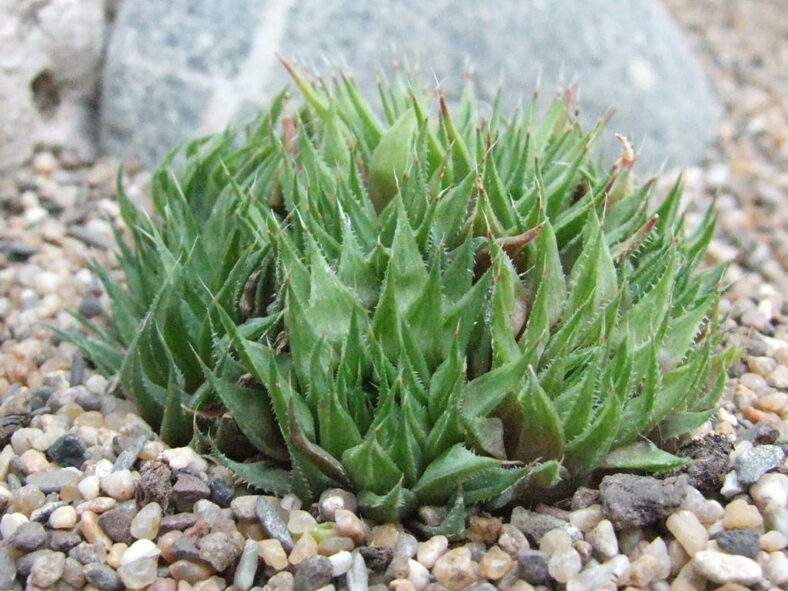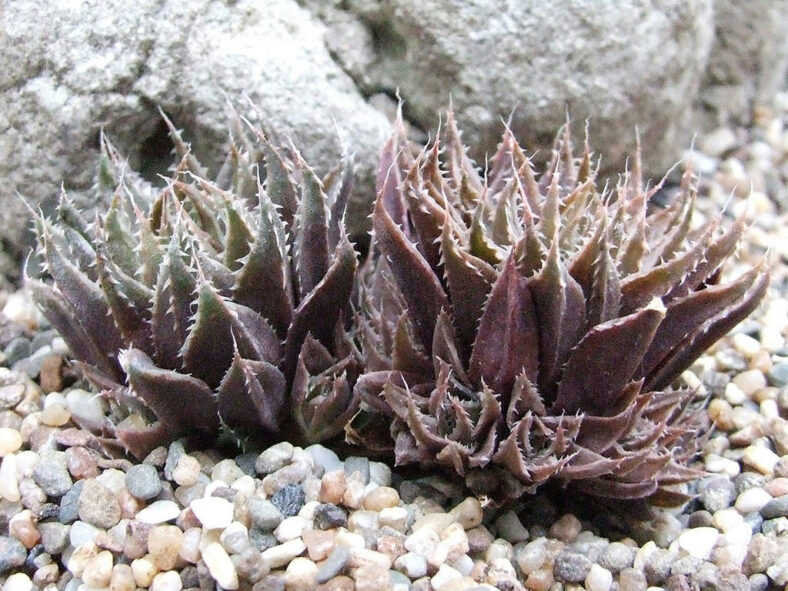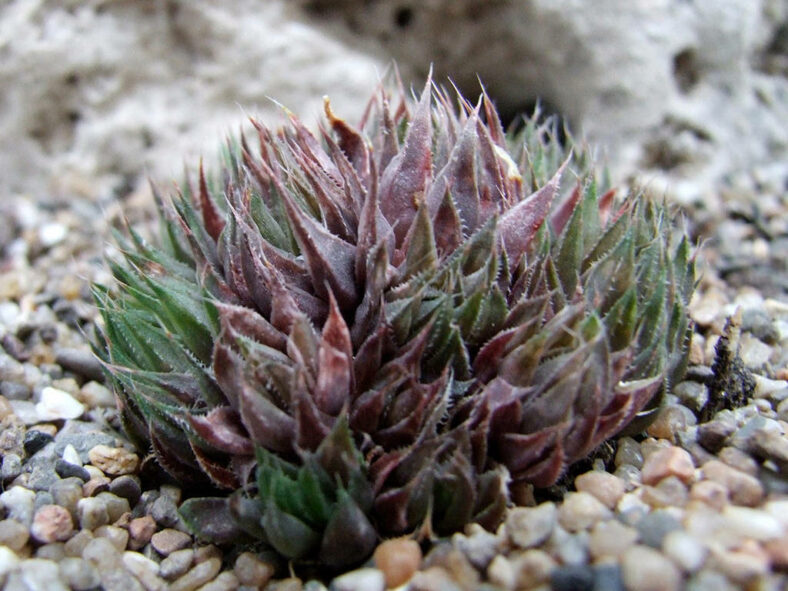Haworthia elizeae is an interesting species that Bruce Bayer includes in Haworthia rossouwii, although there is no clear connection between the two.
Scientific Name
Haworthia elizeae Breuer
Scientific Classification
Family: Asphodelaceae
Subfamily: Asphodeloideae
Tribe: Aloeae
Genus: Haworthia
Etymology
The specific epithet "elizeae" (pronounced "el-ee-ZEE-ee") honors Elize Esterhuizen, the wife of J.M. (Essie) Esterhuizen.
Origin
Haworthia elizeae is native to South Africa. It grows on south-facing slopes in stony outcrops and is known only from Bromberg, the eastern end of the Riviersonderend Mountains in the Western Cape province.
Description
Haworthia elizeae is a small succulent that forms rosettes of fleshy leaves with well-toothed margins and a keel and a translucent tip. It readily offsets, creating a dense clump over time. The rosettes can grow up to 1.3 inches (3 cm) in diameter. The leaves are primarily green but can take on reddish to purplish hues when exposed to intense sunlight.
In the spring, Haworthia elizeae produces small, white flowers with green to greenish-brown venation on long, slender stalks.

How to Grow and Care for Haworthia elizeae
Light: Place the potted plant in a bright area with some protection from the hottest rays of the day. Deep shade tends to weaken the plant over time. If it has spent the winter indoors, gradually move it outdoors into the bright sun to prevent sunburn.
Soil: This plant does not like its roots to remain wet for prolonged periods, so the soil should be well-drained. You can use commercial soil for succulents or make your own potting mix.
Temperature: Haworthia elizeae tolerates warmer summer temperatures and cool winter temperatures. However, it does not like being too cold. It grows best in USDA Plant Hardiness Zones 10a to 11b, with average minimum winter temperatures ranging from 30°F to 50°F (-1.1°C to 10°C).
Watering: Water thoroughly in spring and fall, when growth is most active, and wait until the top of the soil dries out before watering again. Water the plant less in winter, when its growth slows significantly. During the summer, when it is mostly dormant, water it just enough to keep the leaves from shriveling.
Fertilizing: Haworthia elizeae does not require much fertilizer. However, for optimum growth, fertilizing is a good idea. Feed with a water-soluble fertilizer only during the growing season.
Repotting: This plant can stay in the same pot for years. To keep it healthy and happy, repot it into fresh soil every two to three years in spring or fall.
Propagation: The most common method of propagating Haworthia elizeae is by offsets, although it can also be started from seeds. The best time to remove the offsets is during the repotting. For seed propagation, sow the seeds in a well-draining soil mix in spring or fall.
Learn more at How to Grow and Care for Haworthia.
Toxicity of Haworthia elizeae
Haworthia elizeae is considered non-toxic and safe around kids and pets.
Links
- Back to genus Haworthia
- Succupedia: Browse succulents by Scientific Name, Common Name, Genus, Family, USDA Hardiness Zone, Origin, or cacti by Genus
Photo Gallery
Click on a photo to see a larger version.


